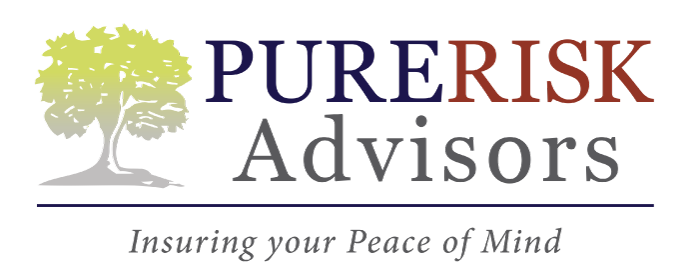Texas Condo Association Insurance
9:00am - 5:00pm Mon-Fri
We'll Reply in 15min*
Index
Contact Us
Phone
Location
Condominium living offers residents numerous benefits, from community amenities to shared costs. However, living in a condo also requires understanding complex insurance needs. This guide provides comprehensive insights into Texas condo association insurance, aimed at helping you navigate this essential aspect of condo ownership.
Understanding Condo Association Insurance
Condo association insurance is a type of policy that protects communal interests in a condominium development. This insurance typically covers the common areas, buildings, and liabilities associated with the property. Understanding the nuances of this coverage ensures condo owners are adequately protected.
Key Terms and Definitions
Familiarizing yourself with key terms is crucial. Here are some essential definitions:
- Master Policy: This is the policy that covers the overall structure and common areas of the condominium.
- Liability Coverage: This part of the policy covers legal fees and damages if the association is sued.
- Named Insured: The designated entity or individuals covered by the policy, usually the condo association.
Understanding these terms will empower you to make informed decisions regarding insurance coverage. Additionally, it's worth noting that the specifics of each master policy can vary significantly based on the insurer and the unique needs of the condominium. Therefore, it is advisable for condo owners to review their policy documents carefully and consult with their insurance agents to clarify any uncertainties.
Importance of Condo Association Insurance
Condo association insurance is crucial for several reasons. Firstly, it protects the financial interests of the condo association and its members by covering damages resulting from unforeseen events, such as fires, storms, and vandalism.
Secondly, it provides liability protection. Whether it’s a slip-and-fall incident in a common area or damage caused by common facilities like a pool or gym, having insurance can prevent costly legal battles and financial liabilities. Furthermore, many mortgage lenders require proof of condo association insurance before approving loans, making it an essential component of homeownership in a condominium setting.
In essence, proper coverage not only safeguards your investment but also fosters a stable living environment for all residents. It can also enhance property values, as potential buyers often view a well-insured condo association as a sign of responsible management and care for the community. Additionally, having a robust insurance policy can facilitate smoother operations within the association, allowing for timely repairs and maintenance of common areas, which ultimately contributes to the overall aesthetic and functionality of the property.

Types of Coverage in Condo Association Insurance
Condo association insurance is not a one-size-fits-all solution. Various types of coverage address different risks associated with condo living.
Building Coverage
This is typically the core of any condo association insurance policy. Building coverage protects the physical structure of the condominium and any common areas. If a disaster damages the building, this insurance will cover repairs or rebuilding costs, minimizing financial disruption for the association.
It's important to assess the policy limits to ensure they reflect the current replacement cost of the building, especially given inflation and fluctuating construction costs. Additionally, associations should consider including coverage for upgrades or improvements made to the common areas, as these enhancements can significantly increase the overall value of the property. Regular evaluations and updates to the policy can help ensure that the coverage remains adequate and protects against potential losses effectively.
General Liability Coverage
General liability coverage protects the condo association against claims arising from injuries or damage occurring in common areas. This coverage is vital, as it addresses lawsuits from residents or visitors who might be injured on association property.
The significance of this coverage cannot be understated; it helps shield the association's assets and preserves communal funds from unexpected legal expenditures. Furthermore, it can also cover incidents related to maintenance issues, such as slip-and-fall accidents due to icy sidewalks or poorly maintained amenities. By investing in comprehensive general liability coverage, associations can foster a safer environment for all residents and guests, while also mitigating the financial risks associated with potential claims.
Directors and Officers Liability Coverage
Directors and Officers (D&O) liability coverage protects the condo association's board members from claims arising from their decisions and actions while managing the property. This is particularly important as board members have a fiduciary responsibility toward the association and its members.
In the event of litigation due to alleged poor management or negligence, this coverage ensures that board members are not personally liable for legal fees, reinforcing the importance of serving on the board without fear of personal financial repercussions. Additionally, D&O coverage can foster a more engaged and proactive board, as members may feel more empowered to make necessary but potentially controversial decisions, knowing they have protection against personal liability. This can lead to improved governance and ultimately enhance the overall management of the condo association, benefiting all residents in the long run.
How to Choose the Right Condo Association Insurance in Texas
Selecting the appropriate condo association insurance can seem daunting, but with the right approach, it can be managed effectively. Here are steps to consider in making the right choice.
Assessing Your Association's Needs
Start by evaluating the unique needs of your condo association. Consider factors such as the size of the property, amenities provided, and historical claims data. Conducting a thorough risk assessment will help you understand what types of coverage are necessary.
Engaging with fellow board members can provide diverse perspectives on potential risks that need addressing, ensuring that comprehensive coverage is prioritized in the policy. Additionally, it may be beneficial to consult with a risk management professional who can offer insights into specific vulnerabilities your association may face, such as liability risks associated with shared facilities like pools or gyms. This collaborative approach not only fosters a sense of community but also ensures that every member's concerns are taken into account, leading to a more robust insurance strategy.
Comparing Insurance Providers
Once you have a clear understanding of your needs, it’s time to compare several insurance providers. Look for companies with extensive experience in condo association insurance, as they will likely have tailored policies addressing common concerns.
Request quotes from different insurers and carefully review their coverage options. Pay attention to the reputation of the providers, considering reviews and testimonials from other condo associations. It’s also wise to inquire about the claims process for each provider, as a smooth and efficient claims experience can significantly impact your association's ability to recover from unexpected events. Additionally, consider the financial stability of the insurance companies; checking their ratings from independent agencies can provide peace of mind that they will be able to fulfill their obligations when needed.
Understanding Policy Limitations and Exclusions
Every insurance policy comes with limitations and exclusions. Ensure you thoroughly review the policy documents to understand what is and isn't covered. Common exclusions might include damages caused by natural disasters without additional coverage or incidents related to specific communal activities.
Understanding these factors will assist the association in planning and budgeting, ensuring they are in a strong position should a claim arise. Furthermore, it may be beneficial to explore optional coverages that can be added to your policy, such as flood insurance or coverage for equipment breakdowns. These additional protections can safeguard your investment and enhance the overall resilience of your community against unforeseen events, ultimately contributing to the long-term stability and satisfaction of all residents.

The Role of the Condo Association in Insurance Matters
The condo association plays a pivotal role in managing insurance matters, ensuring that members are informed and adequately protected.
Responsibilities of the Condo Association
The board of directors is responsible for securing appropriate insurance coverage and overseeing policy renewals. They must remain up-to-date on legal requirements and standards in Texas to ensure compliance.
Moreover, the association should conduct periodic reviews of coverage to adapt to changing needs, such as new construction or modifications to existing structures. This proactive approach not only helps in mitigating risks but also ensures that the association can respond effectively to any unforeseen events, such as natural disasters or accidents that may impact the community. By staying informed about the latest insurance trends and potential risks, the board can make well-informed decisions that benefit all members.
Communicating Insurance Information to Members
Effective communication with members regarding insurance matters is critical. The board should provide clear and accessible information about the extent of coverage, policy limits, and claims procedures.
Regular updates and meetings can facilitate discussions around insurance and any changes that may arise, ensuring residents feel informed and secure. Additionally, the association could consider creating a dedicated section on their website or a newsletter specifically for insurance-related topics. This could include FAQs, tips on how to file a claim, and insights into common pitfalls to avoid. By fostering an environment of transparency and open dialogue, the condo association can empower its members to take an active role in understanding their insurance needs and responsibilities, ultimately leading to a more cohesive and informed community.
Frequently Asked Questions about Texas Condo Association Insurance
To further assist you in understanding condo association insurance, here are answers to some frequently asked questions.
What Does Condo Association Insurance Typically Cover?
Typically, condo association insurance covers building and common area damages, general liability, and directors and officers liability. Each policy will differ based on the specific needs of the association and the chosen coverage options. Additionally, many policies may include coverage for loss of rental income, which is crucial if the property becomes uninhabitable due to a covered event, such as a fire or severe storm. This ensures that the financial stability of the association is maintained even during challenging times.
How Much Does Condo Association Insurance Cost in Texas?
The cost of condo association insurance varies widely depending on factors such as the size of the property, location, and types of coverage selected. It can range from a few thousand to tens of thousands of dollars annually. Factors such as the age of the building, the materials used in construction, and the overall claims history of the association can also significantly impact premiums. It's advisable to obtain multiple quotes and understand what each policy offers to ensure you receive fair pricing for extensive coverage. Engaging with an insurance broker who specializes in condo associations can also provide valuable insights and help navigate the complexities of the insurance market.
How is Condo Association Insurance Different from Individual Condo Insurance?
While condo association insurance covers communal areas and liability for the entire property, individual condo insurance typically covers personal belongings and liability within a specific unit. Understanding this distinction is fundamental for comprehensive protection. Individual policies often include coverage for personal property, personal liability, and additional living expenses in case the unit is temporarily uninhabitable. Condo owners are encouraged to carry individual insurance to protect their personal assets, as the condo association insurance will not provide coverage for these items. Furthermore, many lenders require individual condo insurance as a condition for financing, underscoring its importance for homeowners.
In addition to personal property coverage, individual condo insurance can also offer protection against specific risks such as theft, water damage, and even liability claims arising from accidents within the unit. This dual-layered approach to insurance—where both the condo association and individual owners maintain their respective policies—ensures a more robust safety net for all residents. By understanding the nuances of both types of coverage, condo owners can make informed decisions that best protect their investments and personal belongings.
REQUEST A QUOTE
Get a condo association insurance quote online today!
Condo Association Insurance
We will get back to you as soon as possible.
Please try again later.
Pure Risk Advisors
Addresses
Need Help?
Pure Risk Advisors is an independent insurance agency offering a comprehensive suite of insurance solutions to protect you from the unexpected.
Services
Business Hours
Monday | 9:00 AM - 5:00 PM
Tuesday | 9:00 AM - 5:00 PM
Wednesday | 9:00 AM - 5:00 PM
Thursday | 9:00 AM - 5:00 PM
Friday | 9:00 AM - 5:00 PM
Saturday | Closed
Sunday | Closed
All Rights Reserved | Pure Risk Advisors.


